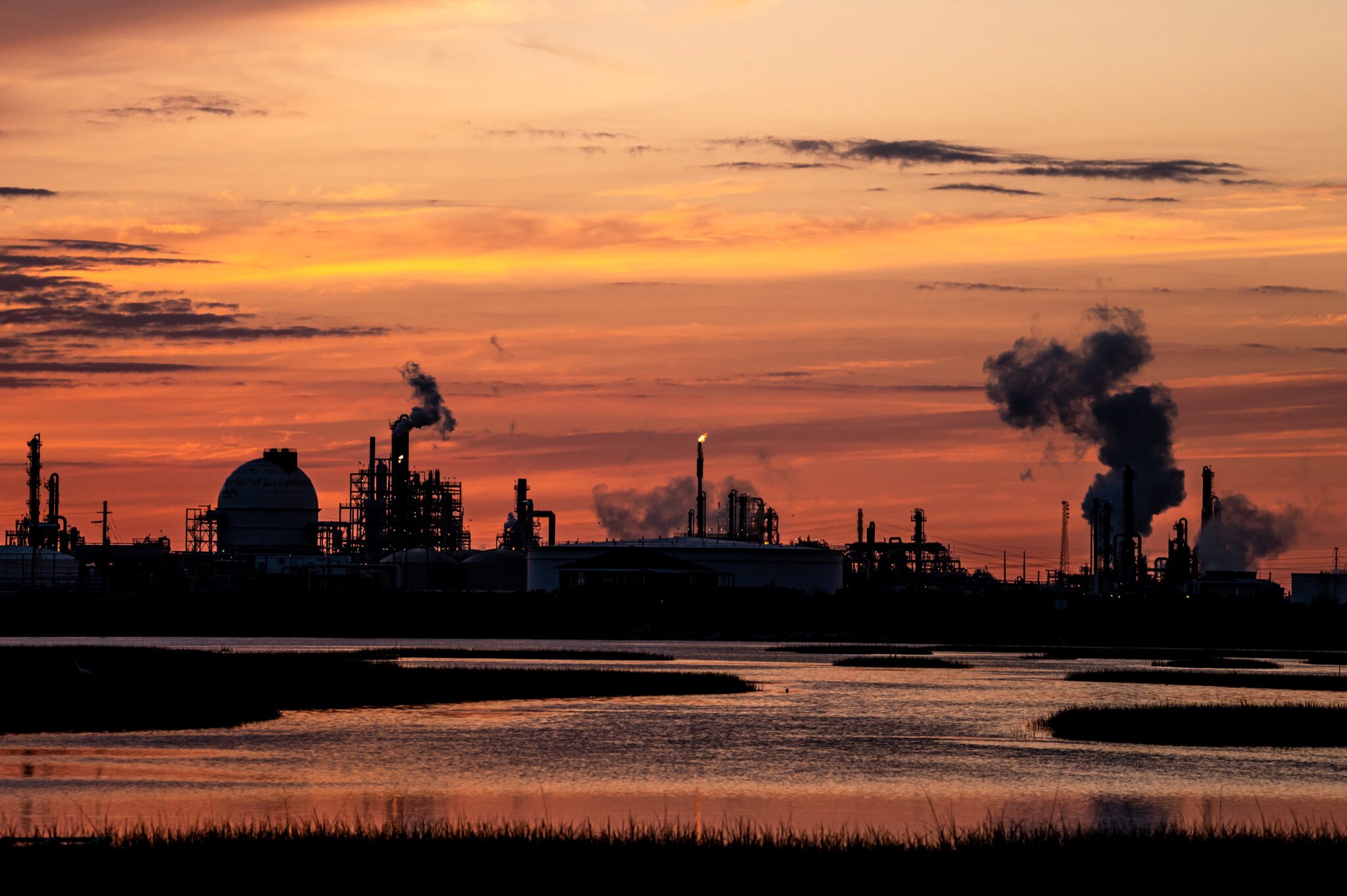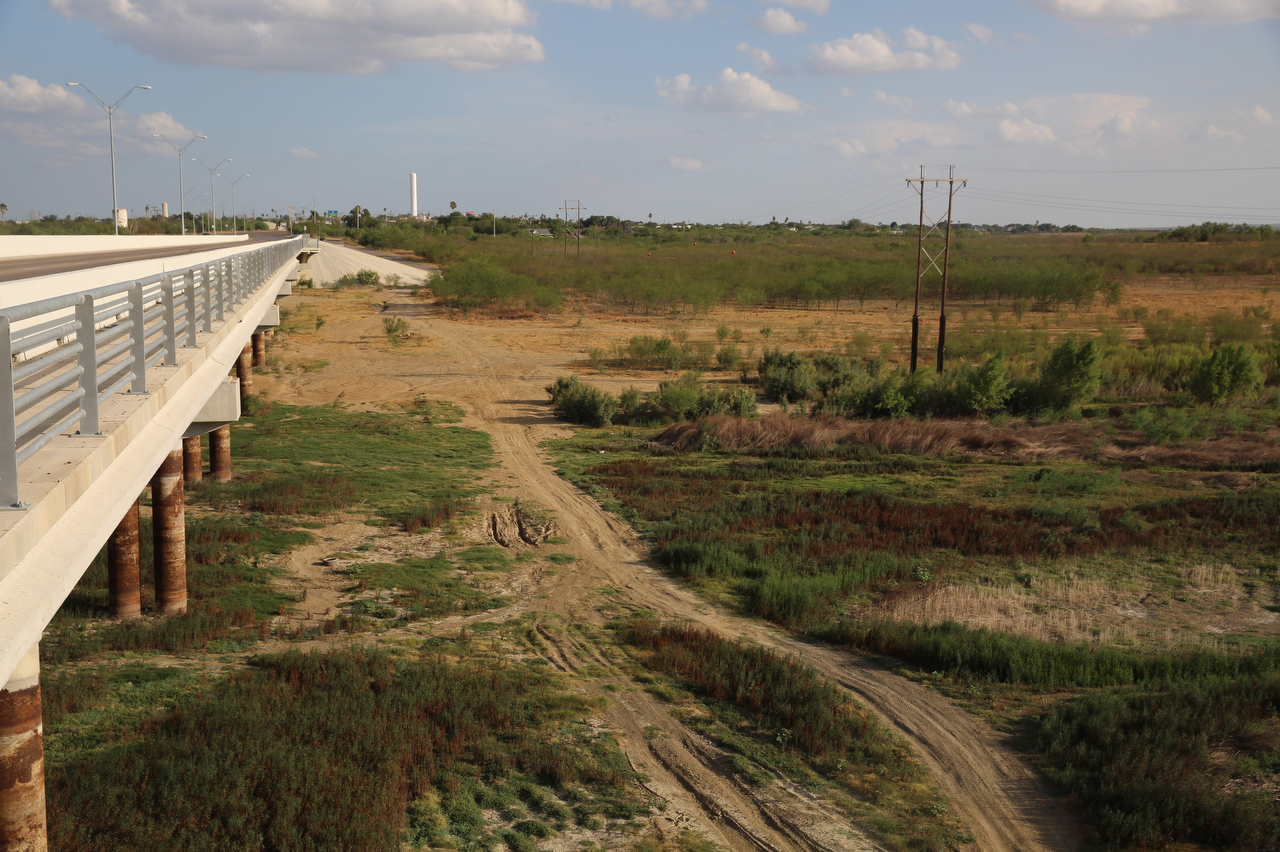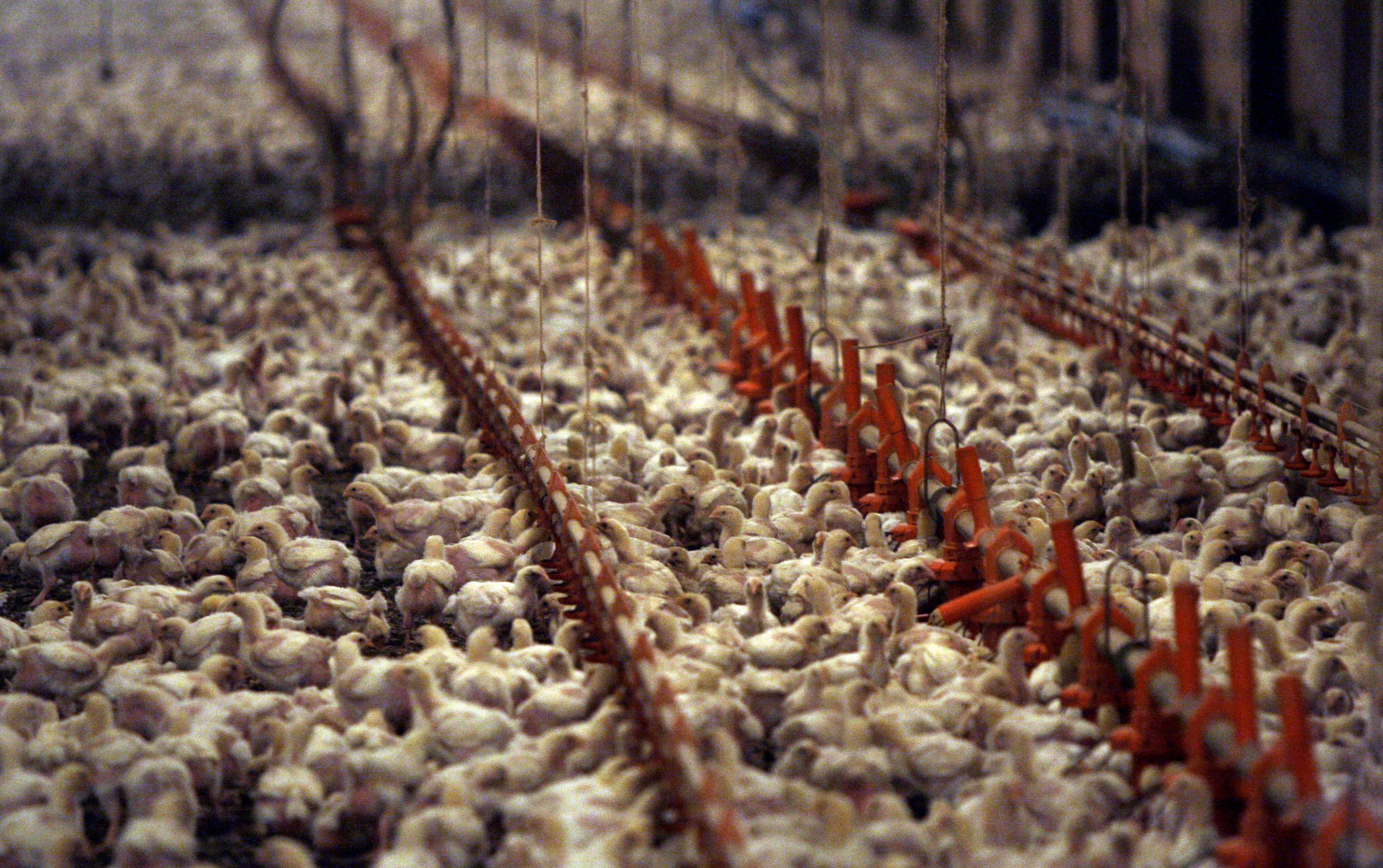
Editor’s note: This is part 3 of Drifting Toward Disaster, a Texas Observer series about life-changing challenges facing Texans and their rivers. For part 1, see “The Second Rio Grande“; part 2, see “Breaking the Brazos“; and part 4, “Staying Afloat.”
One January day in 1971, Sharron Stewart stood with two friends on the banks of the Brazos River in Freeport, near where the 800-mile river empties into the Gulf of Mexico. It was the stretch of the Brazos where Dow, one of the world’s biggest chemical companies, releases wastewater from its massive local complex. Stewart and her friends—one a Dow electrician—looked down at the green water flowing by and threw in a log.
The group was conducting a citizen science experiment to see where Dow’s wastewater traveled after entering the Brazos. The ad hoc investigators followed their log to an inlet of Galveston Bay—a tremendously productive, biodiverse habitat of oyster reefs and marshes that provides a nursery for the Gulf’s marine life.
Dow, one of the Texas Gulf Coast’s biggest industrial water polluters according to wastewater permit data, was drawn to Freeport in 1940 by its deepwater port and abundant oyster reefs. The company used oyster shells to extract magnesium from seawater, sending the mineral to factories building airplanes for use in World War II. But by the early 1970s, the same reefs that attracted Dow were being threatened by pollution.
At the time, Stewart was a young mother who had recently moved to Lake Jackson, a company town built to house Dow’s workers. Soon after the move, she and her daughter began having trouble breathing. Gradually, Stewart learned all she could about what companies dumped into the air and water in an era when Americans had little legal protection. The Environmental Protection Agency (EPA) was new, and the Clean Water Act had yet to become law. Stewart joined a union-led group, the now-defunct Citizens’ Survival Committee, which advocated for a safer environment.
In November 1971, Stewart was one of few citizens brave enough to speak at a meeting that the 1-year-old EPA convened to discuss water quality in Galveston Bay. “Why must we wait until we have irreparable damage to do something?” she asked. “I thought we were trying to abate pollution sources before they occur.”
Fifty years later, some things have improved on the Brazos. Pollution from Dow and other chemical plants is regulated under permits issued through the 1972 Clean Water Act. These plants are “a whole lot better than they were,” Stewart said. But the river remains under threat, and she worries that some hard-won environmental protections are eroding away.
Click to expand the timeline into a new window.
Records obtained by the Texas Observer in late 2022 show the 7,000-acre Dow chemical complex in the Freeport area dominates the river more than ever. Data from the Texas Commission on Environmental Quality (TCEQ) show the company repeatedly violated federal standards for industrial wastewater over the past five years—and has faced minimal consequences for doing so.
In many ways, the Brazos is the state’s patron river. It cradled colonial Texas’ first capital, San Felipe de Austin. It inspired John Graves’ iconic book Goodbye to a River and spawned a conservation movement.
Despite this legacy, the Brazos is now a captive and contaminated river. As a “navigable” waterway, the river ostensibly belongs to the public. But in reality, a significant portion of the water that Graves canoed down in 1957 had long been destined for the intake pumps of Dow. And once the company’s plants are done with the water, they don’t always return it in the same condition.
“Why must we wait until we have irreparable damage to do something?”
Today, Dow-Freeport is the largest chemical plant complex in the Western Hemisphere, with more than 4,000 employees and 3,000 on-site contractors. Dow is the biggest source of toxic pollution in the Lower Brazos Watershed, according to the EPA’s Toxics Release Inventory and related reports by Environment America. Instead of producing magnesium for airplanes, Dow now churns out a dizzying array of chemical compounds, many bound for the plastics industry.
Between 2018 and 2022, Dow-Freeport violated federal limits on pH, solid waste, or chemicals more than 20 times, according to TCEQ records on the facility’s wastewater permit issued through the National Pollutant Discharge Elimination System (a result of the Clean Water Act). Most troubling are the facility’s excessive releases of copper, which can be toxic to fish and other marine life in high concentrations, and of chemical compounds called halocarbons—some of which are highly toxic to both wildlife and humans.
Running large plants like Dow’s requires staggering amounts of water. The company is allowed to divert more than 200,000 acre-feet each year from the Brazos—almost double what the City of Austin draws from the Colorado River for municipal drinking water. And Dow is continuing to expand: The company is building a new polyethylene plant in Freeport set to open in 2025, according to reporting by the Brazosport Facts. While Dow has water conservation and sustainability goals, it’s also using its tremendous economic and political clout to muscle other water users out of the way.

What’s more, Dow-Freeport is operating with a wastewater permit that expired in 2019 but has been “administratively continued” by TCEQ, according to an agency spokesperson. That means Dow is allowed to follow outdated rules while a TCEQ review of the facility’s new draft permit drags on.
“It is concerning that this is coming up on five years, which is, frankly, the length of time a new permit would have been,” said Josh Kratka, a senior staff attorney at the National Environmental Law Center. While Kratka doesn’t know what’s transpiring between Dow and TCEQ specifically, he explained that many companies try to convince regulators that they can’t reasonably comply with pollution limits in order to delay enforcement. “Rather than really crack down, enforcing a solution quickly, the regulators just give them more time,” he said.
A 2019 TCEQ report shows that Dow is negotiating for higher effluent limits. The agency spokesperson said Dow has “a very complex permit application” that involves additional wastewater streams and regulatory changes to prevent fish from being sucked into industrial plants’ cooling systems or getting trapped against screens.
It’s hard for anyone to oppose Dow, said Sharron Stewart, who after all these years remains an environmental activist. “Nothing can be done without their say-so,” she said of Dow’s role on the Brazos. “Most government entities are not going to go against their wishes, even if their wishes are wrong.”
The Brazos rises just west of Lubbock and flows southeast all the way through Texas to its mouth in Freeport. While part of the Upper Brazos is protected as the John Graves Scenic Riverway, the river’s bottom half gets less attention from conservationists.
One of lower river’s biggest champions is Bruce Bodson, a biologist-turned-lawyer who runs an organization called Lower Brazos Riverwatch out of Sugar Land. Nearly every week, Bodson can be found pushing off into the brown, silt-filled waters of the Brazos in a canoe or kayak. He uses improvised boat launches, like one in Brazos Bend State Park that’s just a muddy wedge of gentler slope along the river’s famously steep banks.
Bodson has become something of a 21st-century Graves, albeit a less solitary one. He often has a handful of volunteers paddling alongside him, watching for illegal dumping and leaking oil and gas pipes. He has plans to start measuring populations of threatened freshwater mussels.
“As far as I know, below Waco we’re the only primarily environmental organization that deals with the river. It’s pretty much an orphan,” Bodson said. The nonprofit has approximately 150 members in communities along the river from Waco to Freeport.
Bodson tries to keep an eye on the biggest users and biggest polluters on the river—including Dow, although his organization primarily focuses its efforts upstream. Bodson learned through a TCEQ newsletter that Dow was fined in 2021 for some of its wastewater permit violations. The fine was the result of a 2019 inspection of the Freeport facility by TCEQ that found excessive discharges of copper and halocarbons. But even Bodson didn’t know those details of the company’s recent water pollution issues until contacted by the Observer, which obtained the records only after repeated requests.
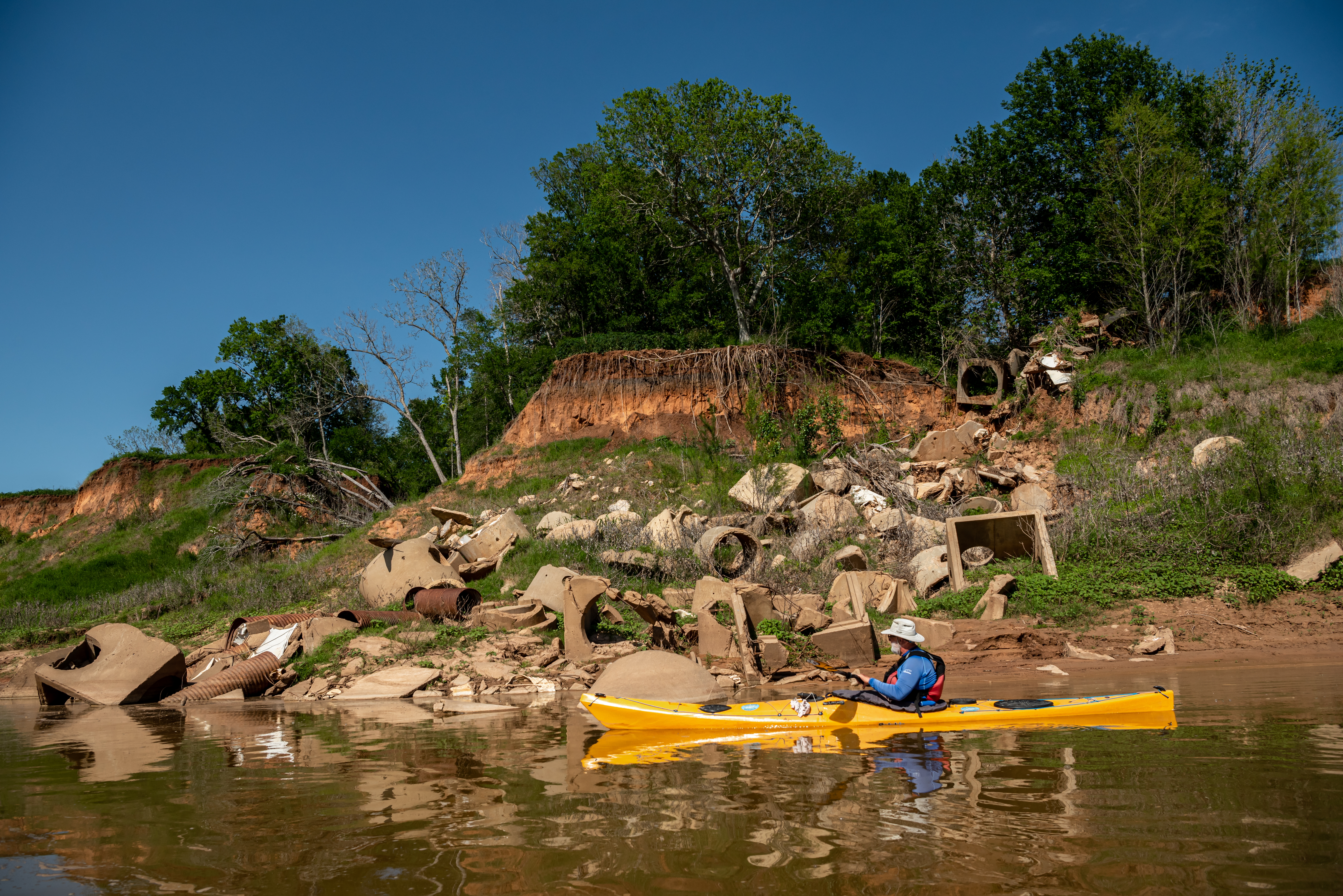
As with most Texas rivers, the water flowing between the Brazos’ banks is already spoken for. In the late 1800s, Texas began selling off surface water rights to the first bidder—creating a “first in time, first in right,” system. On the Lower Brazos, Dow is one of the majority shareholders. Most of Dow’s rights date back to 1942, meaning its water use has legal priority over anyone with newer rights.
About 30,000 acre-feet of this water is stored in Dow’s Harris and Brazoria reservoirs, giant impoundments near the cities of Angleton and Lake Jackson. These reservoirs are owned and operated by Dow, though they also supply water to eight area cities through a contract with the Brazosport Water Authority.
For years, Dow employees had a hunting and fishing club at the Harris Reservoir, which at one time was stocked with bass, catfish, and crappie. On Google Maps, a five-star review of the reservoir reads, “Great hidden gem of a perk for working with Dow.” Then at the end of 2018, the gates closed even to employees and club members. The company kicked off its expansion project, applying for permits from the U.S. Army Corps of Engineers and TCEQ to nearly triple its reservoir capacity.
Once finished, around early 2026, the expanded reservoir will serve as drought insurance for Dow’s plant complex in Freeport, about 30 miles downstream. Harris is a storage reservoir, meaning its primary purpose is to divert and store water from the Brazos when it’s rainy and flows are strong. Dow can use banked water during drier times.
Bodson worries the project could lead to greater flood risks downstream. The company plans to build an outlet to Oyster Creek, an offshoot of the Brazos River that already floods during storms. Fort Bend County, home to the prosperous suburbs of Houston where Bodson and his organization are based, built levees right up against the Brazos instead of leaving room for the floodplain. So floodwater from the Brazos and from Oyster Creek has nowhere to go except farther south—meaning smaller and poorer communities in Brazoria County take the brunt of the damage.
Fort Bend “created a fire hose and pointed it at the next county south,” Bodson said. “There’s more people down there that are more vulnerable.”
In a federal environmental impact statement, Dow contends that its reservoir expansion includes plans to manage flood risk by increasing Oyster Creek’s capacity. “As part of obtaining required construction permits, extensive studies and modeling have been completed to understand and mitigate potential flooding risks,” a Dow spokesperson wrote via email, adding that the project “can be built without impacting flooding or the 100 year flood elevation in either the Brazos or Oyster Creek watersheds.” The permit application remains under review by the Army Corps, though Dow is planning to hire construction contractors soon. The Army Corps did not respond to the Observer’s questions for this story.
Dow’s water rights have long been a point of contention up and down the Brazos. But during Texas’ miserable 2011-2015 drought, these tensions exploded into an all-out legal battle that engulfed the whole state.
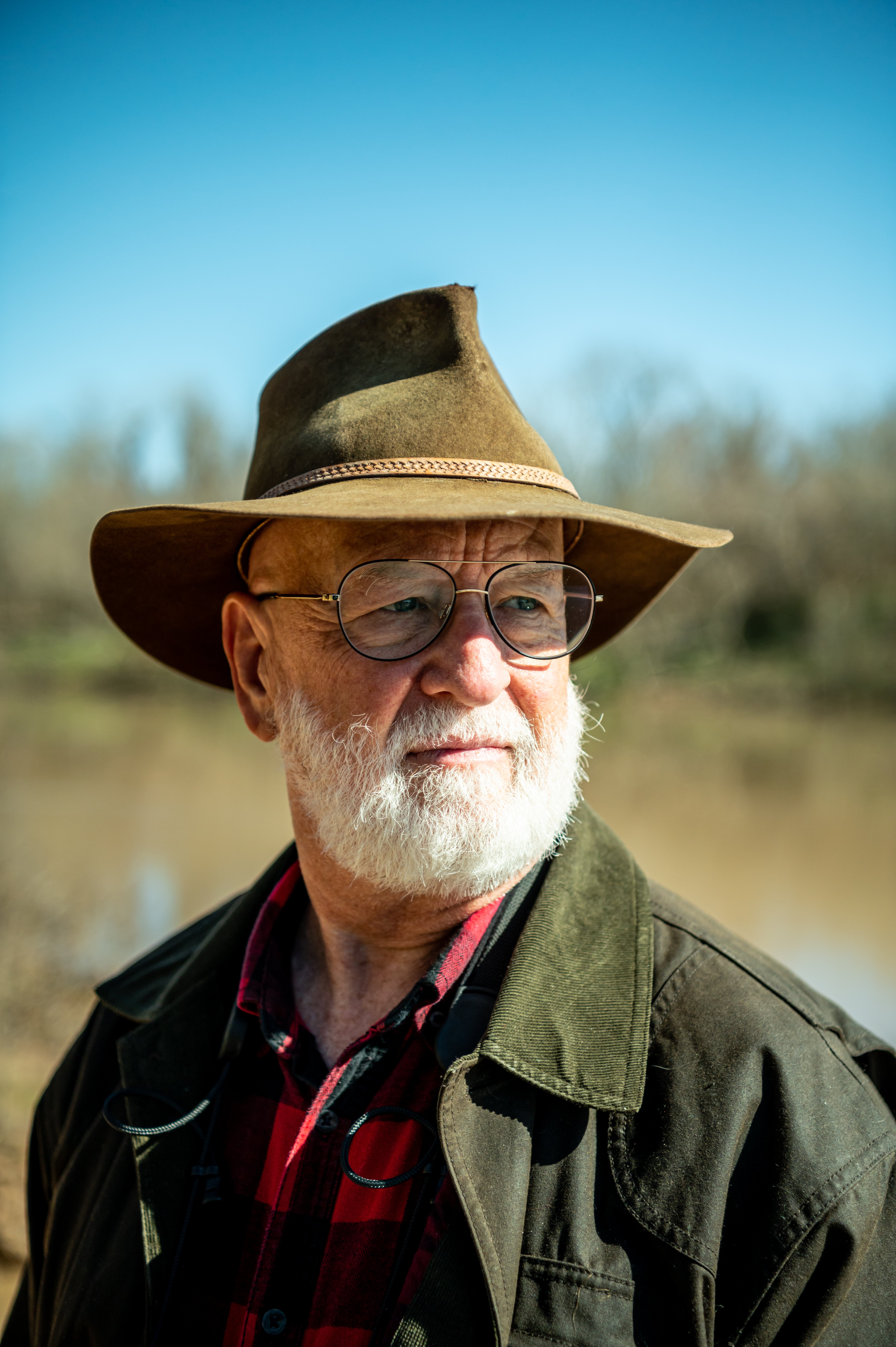
As the historic drought began, Dow asserted its senior water rights for the first time. At Dow’s behest, TCEQ cut off water to users with more recent rights, except for cities and power plants, which the agency exempted so people in the region wouldn’t run out of drinking water or electricity. “Really for the first time, farmers were being told that they could not exercise their water rights,” recalled Jay Bragg, an associate director in the Texas Farm Bureau’s commodity and regulatory activities division. Although the river was flowing past parched farms, its water was already claimed by Dow, which waited downstream.
The Texas Farm Bureau stepped in. But the advocacy group targeted TCEQ rather than Dow, suing the agency for allowing cities and utilities to skip the priority line. Bragg said that strictly enforcing water rights would allow everyone in line to plan accordingly and conserve water if needed. The case crawled through the court system, first in Travis County, then the 13th Court of Appeals and the Texas Supreme Court. In the end, the courts sided with the Farm Bureau, ruling that TCEQ lacks authority to prioritize junior rights holders. In other words, the law backed Dow’s domination of the river. The decision meant that any big company with older water rights can keep the public from getting water even during severe drought.
Ever since, a passive-aggressive line like this one has appeared in TCEQ’s biennial reports to the state Legislature: “Under the TCEQ v. Texas Farm Bureau decision, if suspension is necessary to satisfy a priority call by a senior or superior water right holder, TCEQ will not be able to exempt any junior water rights. This includes exemptions based on public health, safety, or welfare concerns.”
Around the same time in 2014, TCEQ created a watermaster for the Brazos, an official who monitors and enforces water use according to seniority. By then, Dow had banded together with other senior rights holders—including Houston-based power company NRG and the Gulf Coast Water Authority—to form the Lower Brazos River Coalition. The group pushed for the watermaster program in large part because they wanted to restrain junior users upstream.
“What we saw in 2011 and again in 2013 was the water wasn’t getting all the way down to the lower end of the Brazos. And so we felt that we needed to protect [our] interests,” said Ivan Langford, who was then general manager of the Gulf Coast Water Authority and is now retired. “Once it was all said and done, it became a tremendous tool to manage the water of the river.”
“We’ve issued a whole lot of water rights—basically more water rights than there really is water in the river during dry years.”
The watermaster program becomes critical during droughts and low flows. The Brazos watermaster is now one of four in Texas, with the others overseeing segments of the Rio Grande, Lower Colorado, and multiple river basins in South Texas. Increasingly, Texas’ rivers need referees to enforce the law and preempt fights—a signal that the state’s surface water is truly becoming scarce.
Experts and environmentalists generally support the watermaster system. But watermasters are not all-powerful. “When it doesn’t rain, the watermaster doesn’t make it rain,” Bragg said. The Brazos watermaster has had to curtail some individuals’ and farms’ water use every year since 2018, according to records provided by TCEQ.
“We’ve issued a whole lot of water rights—basically more water rights than there really is water in the river during dry years,” noted Myron Hess, a water policy attorney affiliated with the Texas Living Waters Project, a consortium of conservation groups. When most rights were issued, the state ignored the need to leave some water in rivers to protect ecosystems, he said.
As the climate warms, the problems will get worse. A 2021 report from the state climatologist’s office at Texas A&M University explains that Texas might see slightly more rain in the future, especially in the form of extreme storms. But rising temperatures will lead to more evaporation from soil and surface water, worsening the consequences of droughts and causing greater evaporation from reservoirs. Meanwhile, thanks to TCEQ v. Texas Farm Bureau, the state remains hamstrung in its ability to safeguard water supply for city dwellers and power generators, including during heat waves and winter freezes that strain the electrical grid.
Dow has set a goal to reduce water use 20 percent per pound of product by 2025 at six facilities, including Freeport, according to its most recent Environmental, Social, and Governance report. In 2013, the Freeport complex received a TCEQ award for its water conservation measures—like using more seawater and wastewater, and reducing its freshwater use by 10 percent in approximately two years. The corporation does not expect to use more freshwater after its expansion: “Dow strives to offset water needed for growth with conservation,” the company’s spokesperson said.
Outside Dow’s gates, demand for Brazos River water continues to increase. Relatively large cities on the Lower Brazos like Angleton, Lake Jackson, and Freeport began getting drinking water from the river in the 1980s. Smaller towns and villages like Surfside Beach and Quintana Beach still rely on groundwater wells. Both communities have had water quality issues, with high arsenic levels detected in Surfside’s water supply most recently in 2016.
Many residents don’t trust their homes’ tap water. The city halls in both Surfside and Quintana have an unusual feature: outdoor public taps where residents can draw purified water. On a February afternoon in Surfside Beach, Mayor Gregg Bisso opened a closet just inside his city hall’s front door to reveal a reverse osmosis system humming away, providing extra treatment to the village’s well water. The machine is hooked up to that outside tap, which people visit throughout the week on golf carts laden with water jugs.
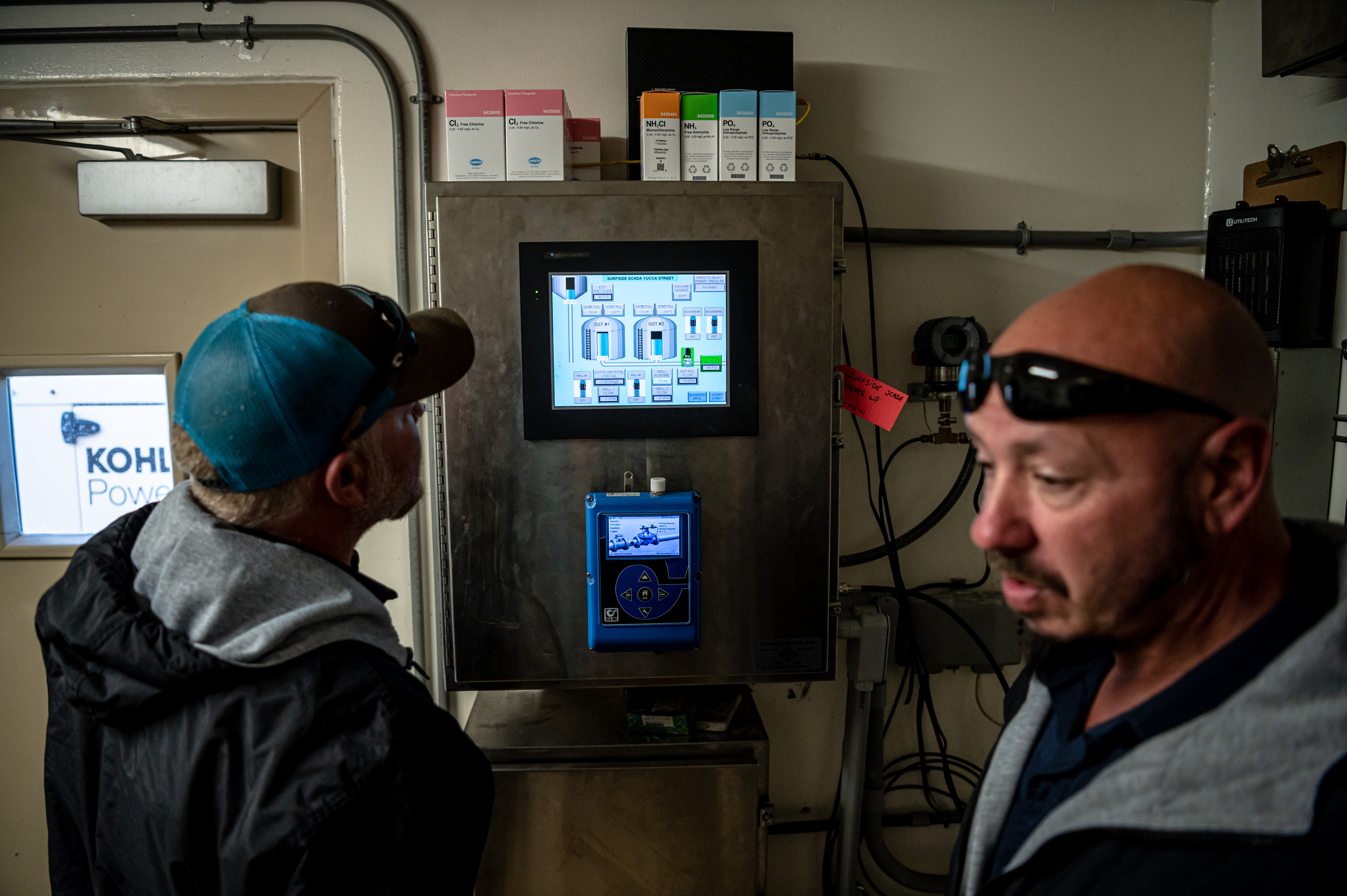
Surfside, a community full of colorful beach houses on stilts, has about 800 year-round residents. But during the summer, several thousand people might visit on any given day. In the early 2000s, Surfside saw multiple summer weekends when water pressure dropped so sharply that people couldn’t get water up to their homes. Since then, the village’s public utility has drilled deeper wells and built a water tower, which has helped.
But Surfside still needs more water, so it’s turning to its larger neighbor, the City of Freeport. Four years ago, Freeport officials agreed to provide some water to Surfside, and Bisso’s employees have since been busy building the necessary infrastructure. “Everyone knew we were going to have to do this sooner or later,” the mayor said.
In February, Surfside’s Public Works Director Erik Ingram showed off the village’s updated “Swordfish” pump station, a small building suspended above one new well. This plant will receive Freeport’s water and mix it with Surfside’s well water at a roughly 2:1 ratio. The main purpose is to increase water supply. But it will have the added bonus of providing cleaner water, Bisso noted.
During the Observer’s visit, Surfside’s plant had everything it needed to start accepting and mixing Freeport water save for some electrical and communications equipment. The new water source is scheduled to start flowing on April 5.
None of these communities, however, have priority over Dow if and when shortages occur.
Local governments, environmentalists, farmers, and other companies in the region seem very aware of growing water supply issues and of Dow’s domination of Brazos water rights. But the flip side of Dow’s presence on the Brazos—the wastewater it puts back into the river—gets less attention, even while evidence quietly piles up that Dow isn’t a good steward of the iconic river it has claimed as its own.
In 2019, TCEQ conducted a routine inspection of Dow’s Freeport plants that found the chemical company had exceeded EPA effluent limits on pH, suspended solids, copper, and purgeable halocarbons. TCEQ fined Dow $28,350 in 2021 for those violations, with the option to donate $11,340 of the fine to Friends of the River San Bernard to preserve natural wetlands. The state agency promised to forgive another $5,670 upon Dow fulfilling conditions for getting its wastewater under control.
“That’s a pretty low fine. Especially for a company like Dow.”
Kratka, the National Environmental Law Center attorney, laughed at these amounts. “That’s a pretty low fine. Especially for a company like Dow,” he said. In 2021, Dow earned $3.2 billion in gross profits. Compared to other states’ environmental agencies, TCEQ has a habit of levying relatively small fines and often forgiving them if offenders take corrective actions.
A TCEQ spokesperson said via email that Dow’s exceedances happened when one of the company’s onsite tenants released cooling water and when some of Dow’s pipes leaked during Texas’ recent winter freezes. The spokesperson noted that Dow returned to compliance in September 2021, although the Observer found further examples of suspended solids and halocarbon exceedances after that in TCEQ permit records.
Dow’s spokesperson told the Observer: “Dow follows a root cause investigation process and has responded to TCEQ with appropriate findings and mitigation measures,” adding that the company does not project significant changes in wastewater discharges as a result of its current expansion.
In its 2021 enforcement order, TCEQ classified those violations as “minor” or “moderate” and wrote that the facility discharged amounts of pollutants that would not be harmful to human health or the environment. But Kratka said the pollutants Dow dumps—notably copper and “purgeable halocarbons”—could pose serious environmental problems if too much enters the Brazos.
According to TCEQ’s 2019 inspection report, Dow released 1,2-dichloroethane, a halocarbon that can cause liver and kidney problems when inhaled or swallowed and is a probable human carcinogen. Dow-Freeport reported releasing two other halocarbons in its routine disclosures to the EPA Toxics Release Inventory for 2019, 2020, and 2021: 1,2-dichloropropane and 1,3-dichloropropene, both of which are considered likely human carcinogens by the EPA. Tony Dutzik, an associate director and environmental policy analyst at Frontier Group who researches industrial water pollution, explained that chemicals reported under Dow’s wastewater permit should overlap with the Toxics Release Inventory.
Because Dow’s wastewater outfalls sit near the mouth of the Brazos, its wastewater may pose more problems for the coast and the Gulf than for the river itself. Coastal ecosystems and fisheries—like the oyster reefs that once fueled Dow’s production of magnesium—likely suffer the greatest harm, explained Alex Ortiz, a water resource specialist at the Sierra Club’s Lone Star Chapter.
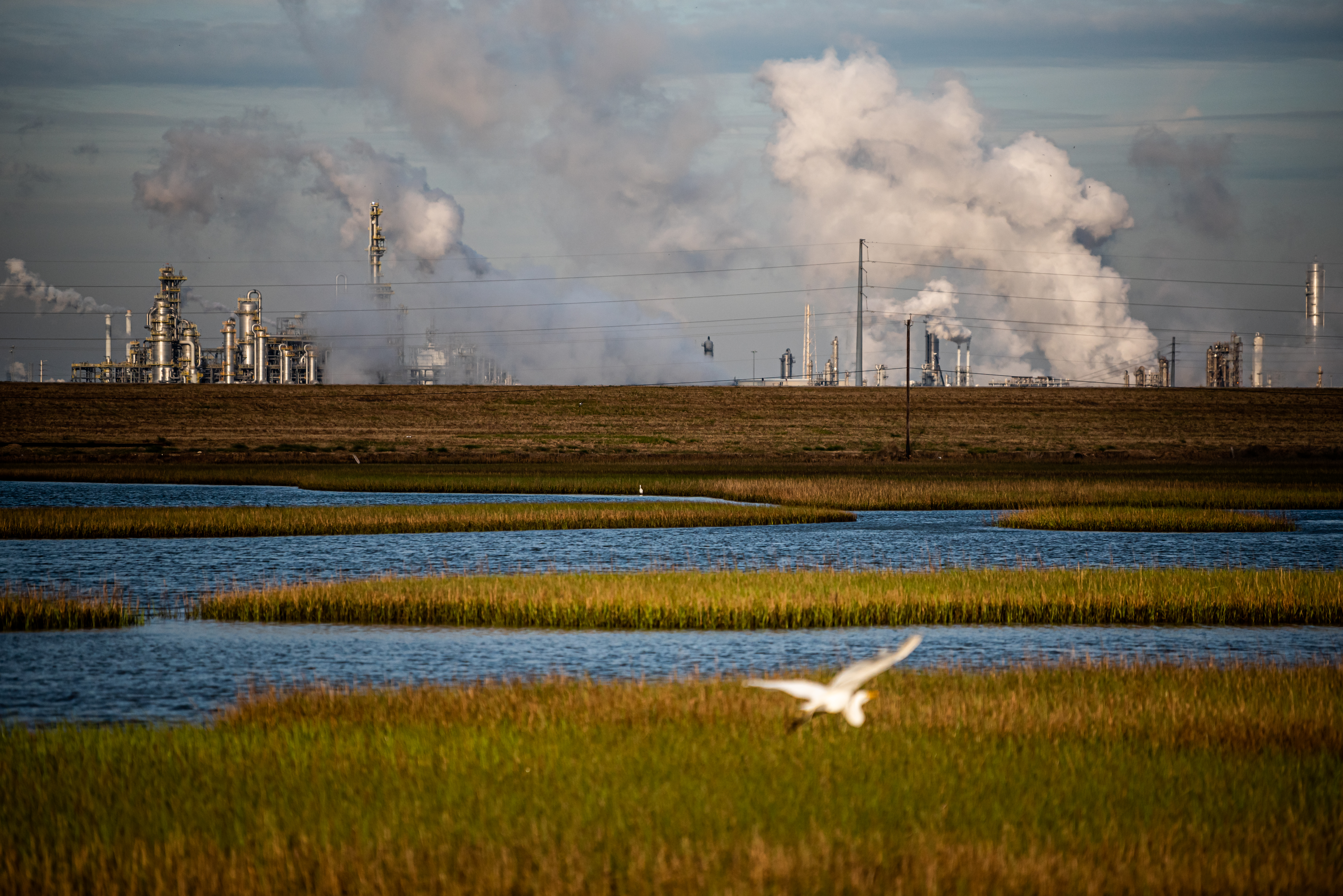
There’s another potential source of pollution that can compound the problem. Dow and other companies manufacture miniscule plastic pellets, called nurdles or microplastics, that sometimes spill into the environment. “The concentration of other toxic chemicals that can attach themselves to individual nurdles can be thousands of times higher than within the ambient water,” Ortiz said. “That is really concerning because then we have these individual particles that are acting as essentially toxic sponges.”
These tiny toxic sponges are eaten by shellfish (including the struggling Gulf oysters), shrimp, and small fish. The small creatures then are eaten by larger ones—including humans—with the toxic plastics becoming more concentrated at each level of the food chain. Animals that consume nurdles can starve because their digestive systems become blocked or they feel full without having eaten actual food.
Dow’s current permit doesn’t mention nurdles but forbids the complex from discharging “floating solids or visible foam in other than trace amounts.” This standard language in other TCEQ wastewater permits has been used to punish another company in Texas for plastic nurdle pollution: Using the rule on floating solids, longtime coastal activist Diane Wilson sued Formosa Plastics in 2017. In 2019, a federal judge ordered the company to pay a $50 million settlement.
While Dow-Freeport does manufacture plastic nurdles, Dow’s spokesperson wrote in an email to the Observer that nurdles have not contributed to the facility’s total suspended solids exceedances documented by TCEQ. Those exceedances typically happen during storms, when intense rain washes dirt and silt into wastewater streams, according to the company spokesperson.
A citizen science initiative called Nurdle Patrol, organized by the University of Texas Marine Science Institute in Port Aransas, has documented nurdles around Freeport on the Brazos River, the Intracoastal Waterway, and on the area’s popular public beaches—though other stretches of the Texas coast have far more nurdles. (There are also other potential sources of microplastics near Freeport, not just Dow.) Recognizing this danger, TCEQ proposed a new rule last year that would have required companies to show they’re taking preventative measures to keep microplastics from escaping into the environment. But Dow, along with the Texas Chemical Council, opposed this move and TCEQ dropped the idea.
A 2022 report found that the watershed receiving Dow-Freeport’s wastewater is the second-most polluted watershed in the U.S.
Along the Brazos overall, a lot of pollution comes from cities’ wastewater and runoff from farms. But industrial pollution is uniquely toxic. A 2022 report by Environment America—which Tony Dutzik co-authored—found that the watershed receiving Dow-Freeport’s wastewater is the second-most polluted watershed in the United States by toxicity-weighted chemicals.
The fact that this toxic pollution isn’t being properly controlled reflects poorly on Dow and on TCEQ, activists and experts say. Many believe the agency does not effectively regulate industry, citing other cases of exceedances and low fines. In 2021, more than 20 environmental groups petitioned the EPA to withdraw TCEQ’s delegated authority to administer wastewater permits under the National Pollution Discharge Elimination System, the type of permit Dow has violated.
“Industrial facilities in Texas exceeded wastewater discharge permits more than any other state in the nation in 2018,” the petition noted. In January 2023, the EPA wrote to the petitioners confirming it’s conducting an “informal investigation” of the allegations in the petition.
Sharron Stewart still lives in a red brick house on the corner of a quiet street in Lake Jackson, the Dow company town. Big windows let sunlight wash over dozens of paintings, many depicting the ocean, including some Stewart painted herself. Her peaceful home provides a stark contrast to the looming industrial backdrop just downriver.
At 84, Stewart has given up painting, but she still attends public meetings to speak out against polluters. Her house is full of books on environmental law, oil spills, and coastal activism. A bookshelf near her front door holds memorabilia from her decades-long career as an advocate for the ocean, for our air and waterways, and for human health.
Dow is not the only industrial polluter on the Lower Brazos. Between Lake Jackson and Freeport is a miles-long maze of pipes, smokestacks, and storage tanks emblazoned with logos that read like a who’s who of the petrochemical industry. There’s the sprawling BASF complex, Huntsman, SI Group, and several other chemical manufacturers, as well as natural gas exporters Freeport LNG and Phillips 66. In the middle of it all is the Port of Freeport, which receives 3,000 container ships each year.
Locals like Stewart are regularly subjected to air and water pollution from these facilities and their incessant traffic. Particularly hard hit is Freeport’s East End, a historically Black neighborhood, surrounded on three sides by industry and the port. After suffering from disproportionate pollution for decades, the once-bustling neighborhood is now being swallowed up by the port.
The same week she spoke to the Observer in her home, Stewart drove to Freeport to comment on the imminent reopening of Freeport LNG after an explosion the previous year.
“This just sort of fell onto me,” she said of her years of environmental activism, “and this was worth doing.” The trouble is, no one has really stepped up to succeed Stewart in holding the region’s most powerful company accountable. While this corner of the Gulf Coast has plenty of environmental activists, many are busy fighting air pollution—which affects locals more immediately—and new facilities like Freeport LNG. Older chemical companies like Dow seem to be getting a free pass on water pollution by escaping public scrutiny.
As of March 2023, Dow-Freeport’s wastewater permit remains in limbo at TCEQ. The company benefits from the Brazos watermaster program and the TCEQ v. Texas Farm Bureau decision at the expense of junior water rights holders. The impending expansion of Dow’s Harris Reservoir stands to consolidate the company’s hold over the Brazos River even further.
“They’re the policy-maker for the river,” Stewart said. “No matter who works on it, the decisions are ultimately theirs.”
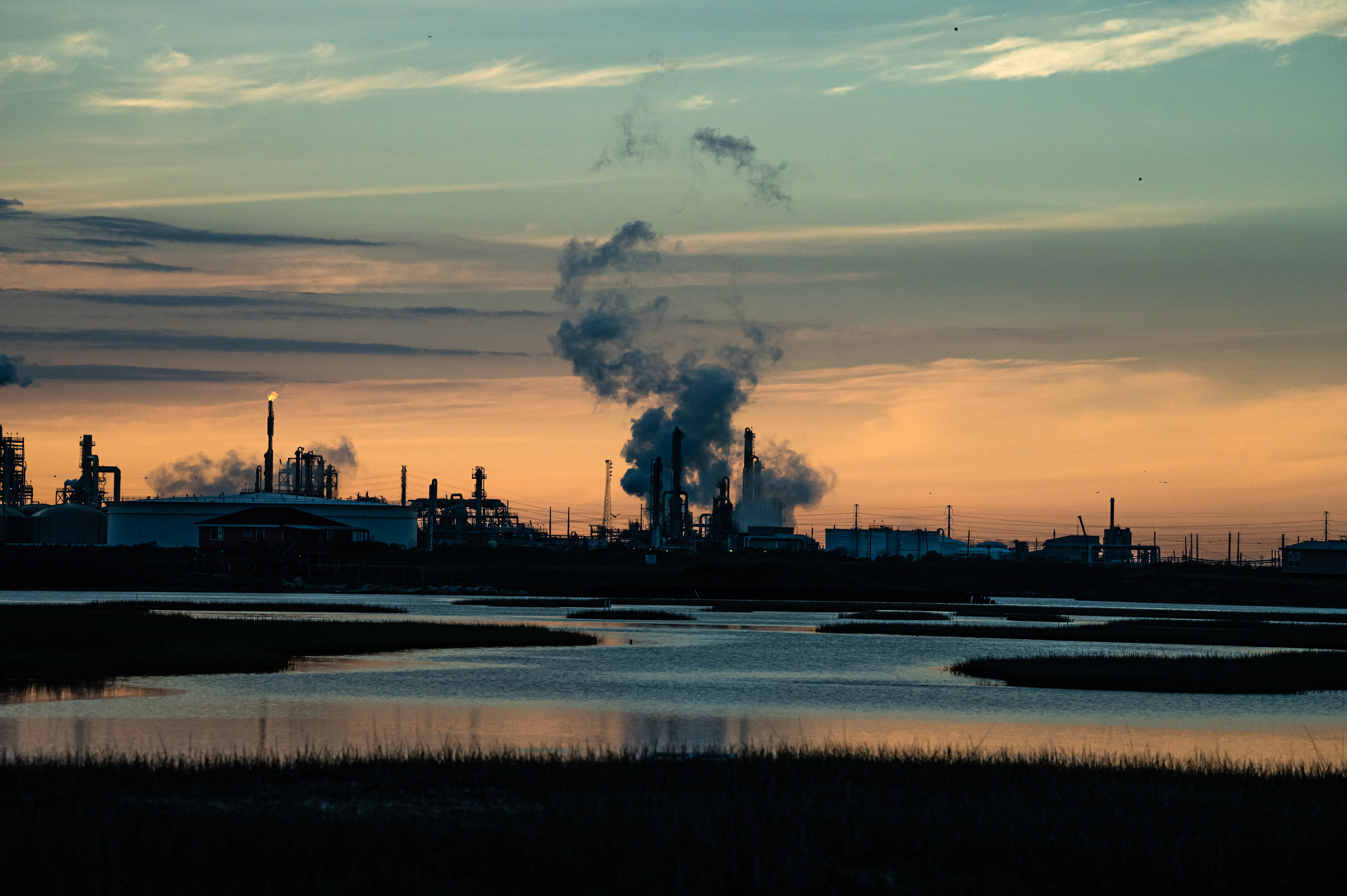

Editor’s note: This is part 3 of Drifting Toward Disaster, a Texas Observer series about life-changing challenges facing Texans and their rivers. For part 1, see “The Second Rio Grande“; part 2, see “Breaking the Brazos“; and part 4, “Staying Afloat.”
